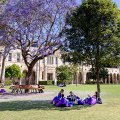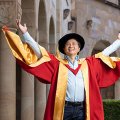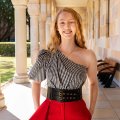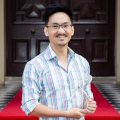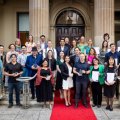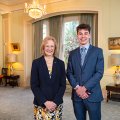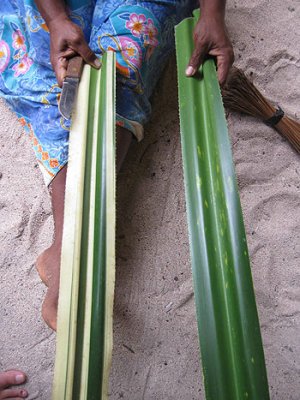
A surprise find in Papua New Guinea has seen a UQ anthropologist invited to present a prestigious lecture in London.
Dr Graeme Were from the School of English, Media Studies and Art History has been elected by the Royal Anthropological Institute to present the Curl Lecture at the British Museum in October.
Dr Were convenes UQ’s Museum Studies program and has spent more than ten years researching in Papua New Guinea. His lecture is entitled “On the materials of mats: thinking through design in a Pacific society”.
“On a field trip a few years ago, I found a discarded mat by the side of the road – a type I had never seen before. I made some enquires and it led me to learn about different types of pandanus palm,” Dr Were said.
“It was as though a whole new world opened up to me – local classifications of plant materials and their uses.”
Dr Were’s research draws attention to the processes involved in product design and how materials carry with them sets of associations and assumptions held by different cultures.
“The choice of materials is vital to the success of the design process, so it is important to think about the ideas people associate with certain materials when considering why they were selected in the first place,” he said.
“Aesthetic and technical ideas related to materials influence their selection, and this is especially true in the design of Papua New Guinean mats.”
The lecture will look at two different types of pandanus palm leaf mats – a large leaf variety that is heated over the fire, stitched together then layered; and a thin leaf variety which is sun-bleached, scraped and then cut into strips before being woven.
“The use of the two contrasting types of materials in mat-making tells us something not just about the social and ritual context of mat usage but it also says something about why people choose particular materials to sustain certain types of kinship relations,” Dr Were said.
“Research leads me to suggest that material selection is an important criteria to consider
when thinking about how ideas [temporal, ritual and social] are built in to the design of everyday things.”
Dr Were is also involved in another British Museum project involving an 11m war canoe from the Solomon Islands.
“As technical knowledge of constructing the inside of the canoe has largely been lost by canoe builders in the Western Solomons, the project asks if creating a 3D scale digital image of the canoe can restitute this knowledge, and to consider the ethical and political implications of this process,” he said.
Dr Were is the best-selling author of Lines That Connect: Rethinking Pattern and Mind in the Pacific, which was released last year.
The Curl Lecture will be presented on October 3 at the Clore Education Centre, British Museum.
Media: Dr Graeme Were (+61 7 3365 2167, g.were@uq.edu.au) or Dania Lawrence (+61 7 3365 9163, d.lawrence@uq.edu.au)

